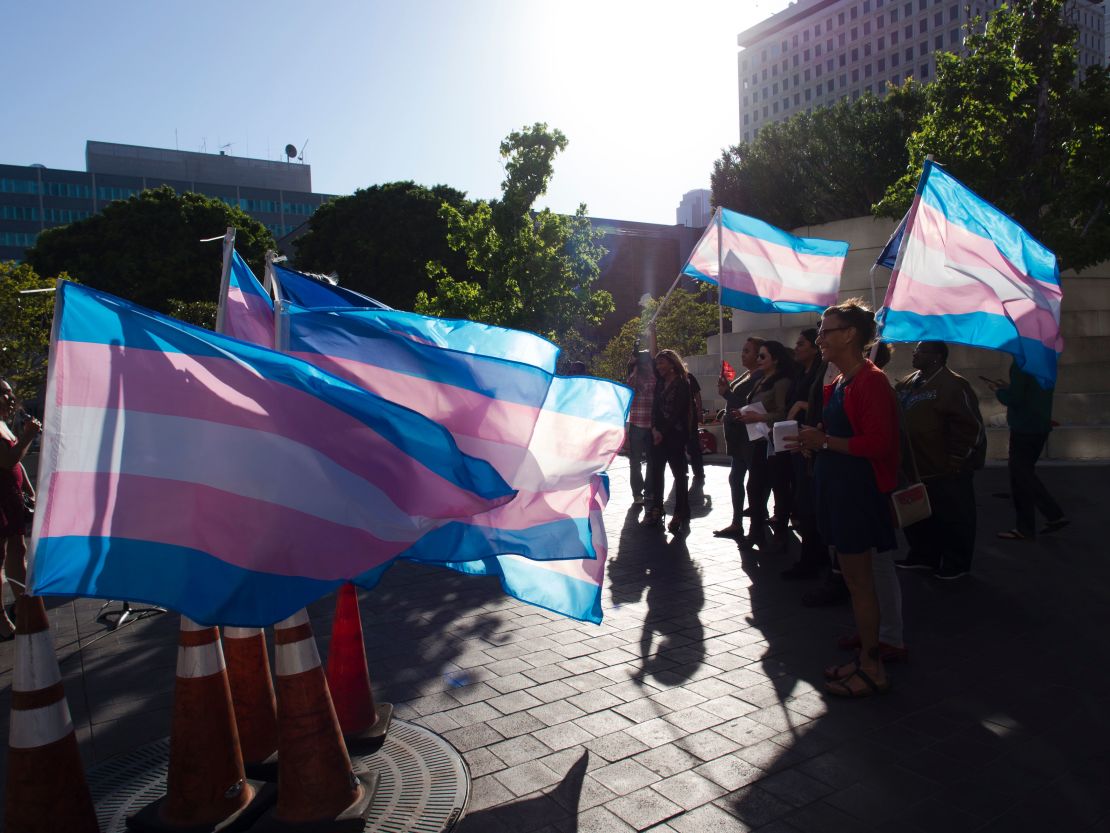Starting today, members of the transgender community will recognize Transgender Awareness Week. But it’s not only a chance for them to connect – it’s also a chance for their allies to show up.
Here’s what you should know.
What is it?
Transgender Awareness Week takes place every year between November 13 and 19, and it’s a time for transgender people and their allies to highlight the community, share their stories and talk about the issues they face every day.
It’s also a chance to educate the public, said Gillian Branstetter, spokeswoman for the National Center for Transgender Equality.

“Only one in four Americans knows a trans person personally,” she said. “And even then, it is still important for people who are not transgender themselves to understand who we are and the issues we face and the barriers that are too often put in our way.”
It always runs in the week leading up to November 20, the Transgender Day of Remembrance.
How is it marked?
Across the country, communities hold different events and activities to help people recognize Transgender Awareness Week, said Alex Schmider, associate director of transgender representation at GLAAD.
“People will screen films that are made by trans creators, they will have arts shows,” he said. “Many of the LGBTQ centers across the country will host panels and events that are open to the public for people to learn.” Some companies, he said, seek out transgender people to come into their workplaces and talk about inclusion.
Transgender celebrities
What’s the Transgender Day of Remembrance?
The Transgender Day of Remembrance (or TDOR) is held every year on November 20 to memorialize the transgender people who have lost their lives as a result of anti-transgender violence. Vigils are held all over the country, by different organizations and churches.
More than two dozen transgender people were killed in 2018, according to information gathered by CNN, the New York City Anti-Violence Project and the Human Rights Campaign. All but one of those victims were transgender women, and all but one were people of color.
And it’s likely the number is much higher. Data is often incomplete because violence against transgender people is underreported, and police, media and family members sometimes misgender the victims.
How did it start?
It started with the violent 1998 murder of Rita Hester, a transgender woman in the Boston area who worked to educate the local community about trans issues. The person responsible has never been found.
Transgender advocate Gwendolyn Ann Smith started the Transgender Day of Remembrance in 1999 to honor not only Hester’s memory, but also all the other victims lost to anti-transgender violence, said Schmider, from GLAAD.
“The vigil was really created to commemorate all the transgender people lost to violence since Rita Hester’s death,” Schmider said. “And it became a really important tradition. It’s become an annual recognition that people acknowledge, and participate, in every year.”

In addition to marking their deaths, advocates also want the media and the public to “examine the factors that lead to this violence,” he said.
“It’s almost every two weeks that we have to talk about a transgender person who has been killed,” Schmider told CNN. “And the culture at large needs to start having a conversation about why.”
What challenges do transgender people face today?
Things have greatly improved for the trans community since Hester’s killing, Branstetter, of the National Center for Transgender Equality, told CNN.
“Transgender people are worlds away from 1999,” she told CNN, pointing out more people know someone who is transgender today and support them. More nondiscrimination laws are in place to help protect transgender people and their rights, and they’re better represented in popular culture.
Despite increased visibility, they still face barriers every single day. Discrimination is evident in healthcare, housing, in the workplace, at school, in restaurants, restrooms, the airport and in their interactions with law enforcement.
That prejudice is often compounded by other parts of a transgender person’s identity, Branstetter added, whether they’re a person of color, undocumented, a sex worker or have a disability.
Another problem is a lot of news stories about transgender people focus on their trauma, Schmider said, instead of their strength and resilience, and that can distort the public’s view of the community.
“The transgender community is a group of people who are living in every community, in every neighborhood, working in every industry, contributing positively to society,” he said. “And that gets lost when there’s just so much negativity around who we are as people.”
So how can I be a good ally?
There are so many ways you can support the transgender community this week. But here are a few:
Look at the community around you. It’s important to check the policies in place at school or at the office, Branstetter told CNN, and to ask administrators to consider how difficult or easy they’ve made things for transgender people. This could include anything from examining how name changes are handled to making sure there are good, transition-related healthcare plans.
Seek out stories by transgender creators. Branstetter pointed out that there are a wealth of personal narratives available by trans people, including on television, in movies and in books.
“Learn about who this community actually is from our voices and perspectives,” Schmider said, “not from people talking about us.”
Call your local LGBTQ center. See what kind of help they need, Branstetter said. It could be volunteering, or offering a professional service that you’re good at.
Educate yourself. Schmider said allies should learn the basic terminology surrounding the transgender community. For example, people often confuse sexual orientation and gender identity, he said.
“Learning terminology not only signals to people that allies have done their work to get familiar with who this community is, but are also working towards being as inclusive as possible.”
Know your identity terms
Many trans people are happy to discuss their experience, Branstetter said, but you shouldn’t assume that’s the case. There are so many resources out there to help you if you want to learn more about the community and how to be supportive.
“By being proactive and educating yourself about the experiences of trans people,” Branstetter said, “you are putting a smaller emotional burden on the trans people in your life to be your personal tour guide.”




































